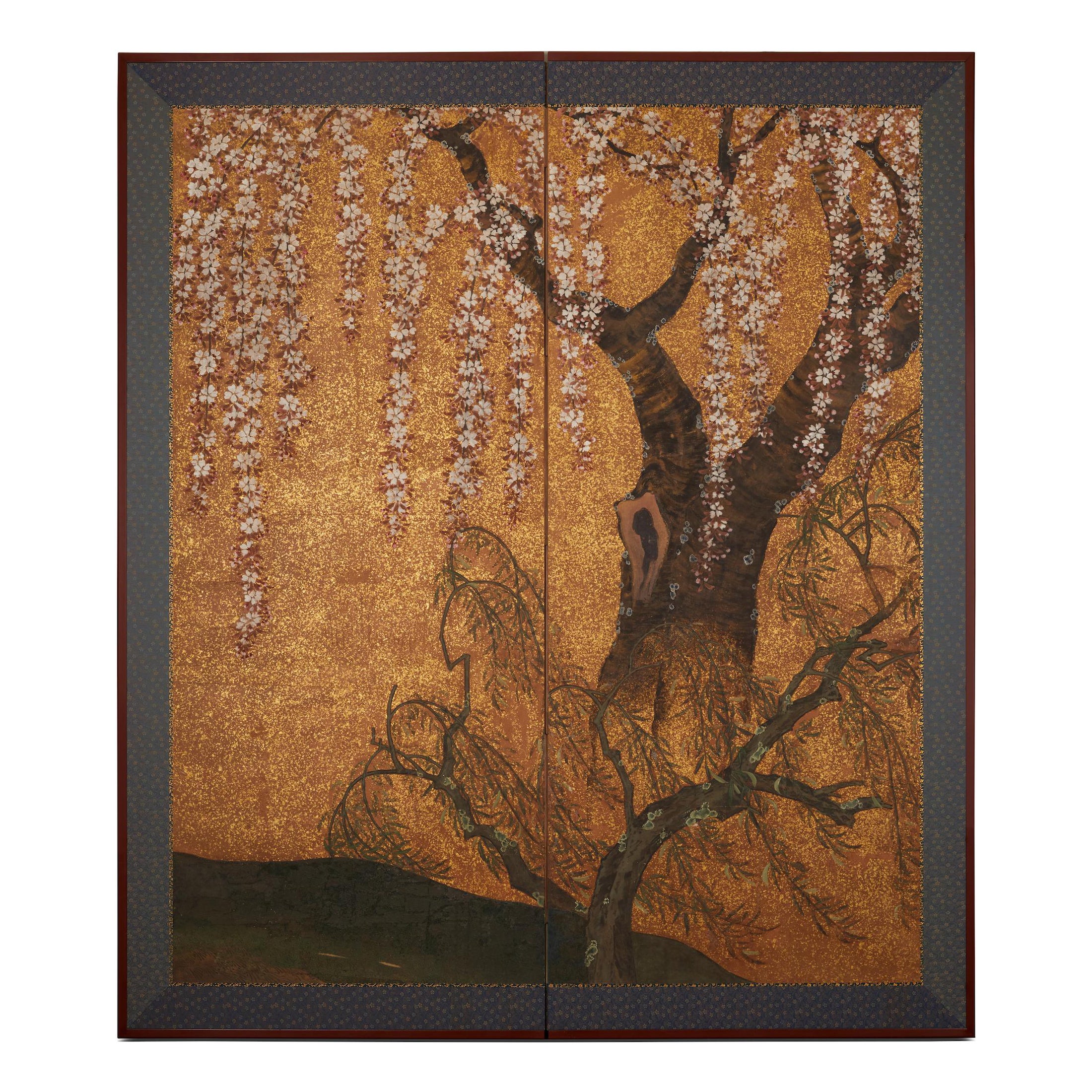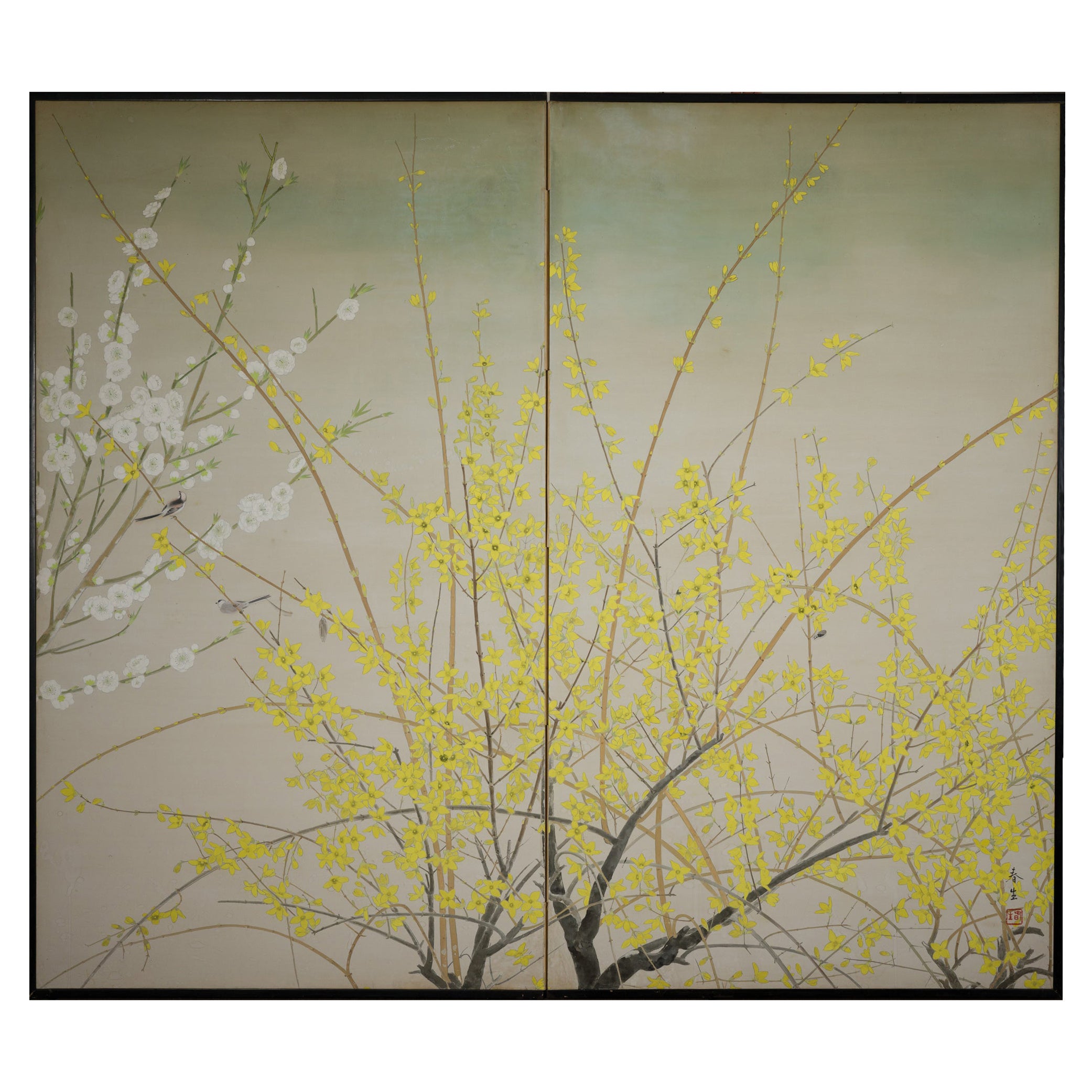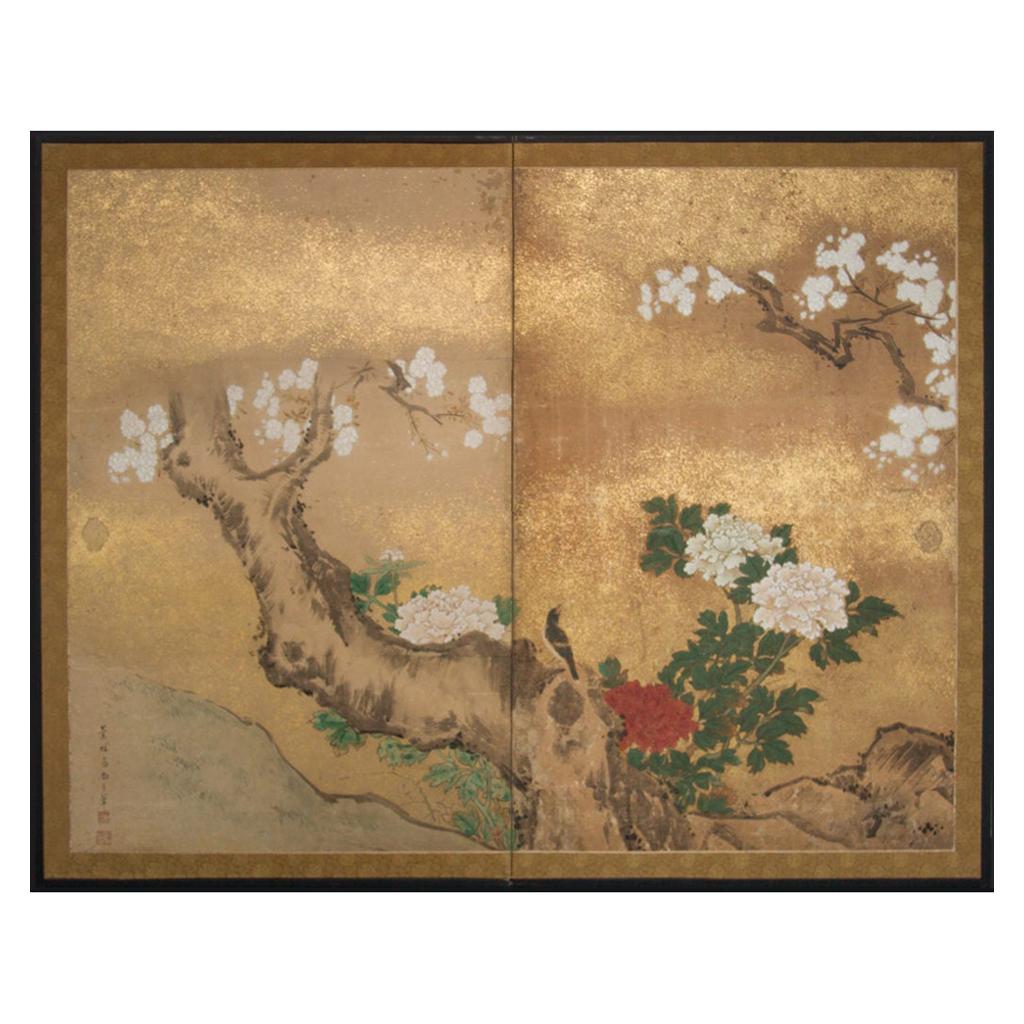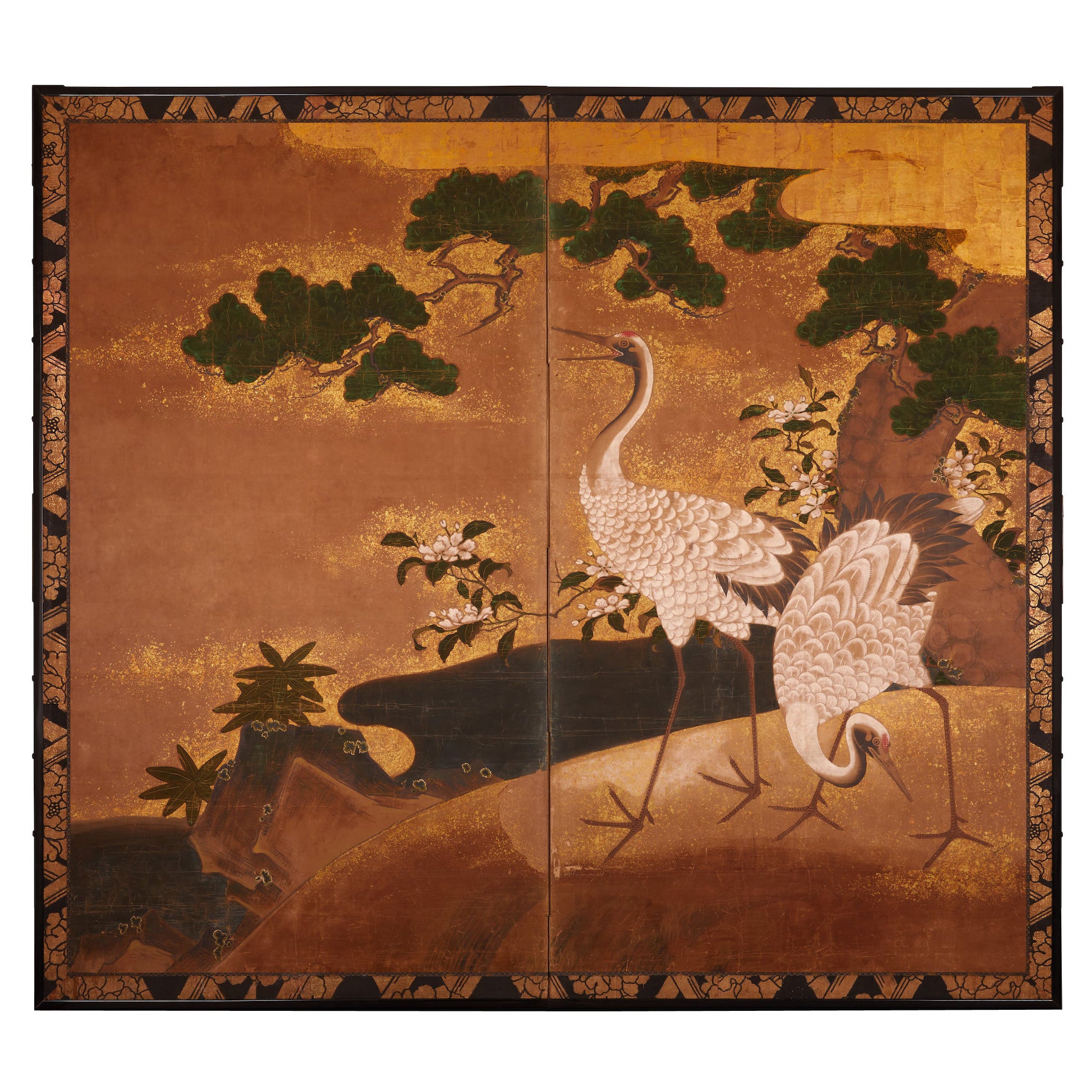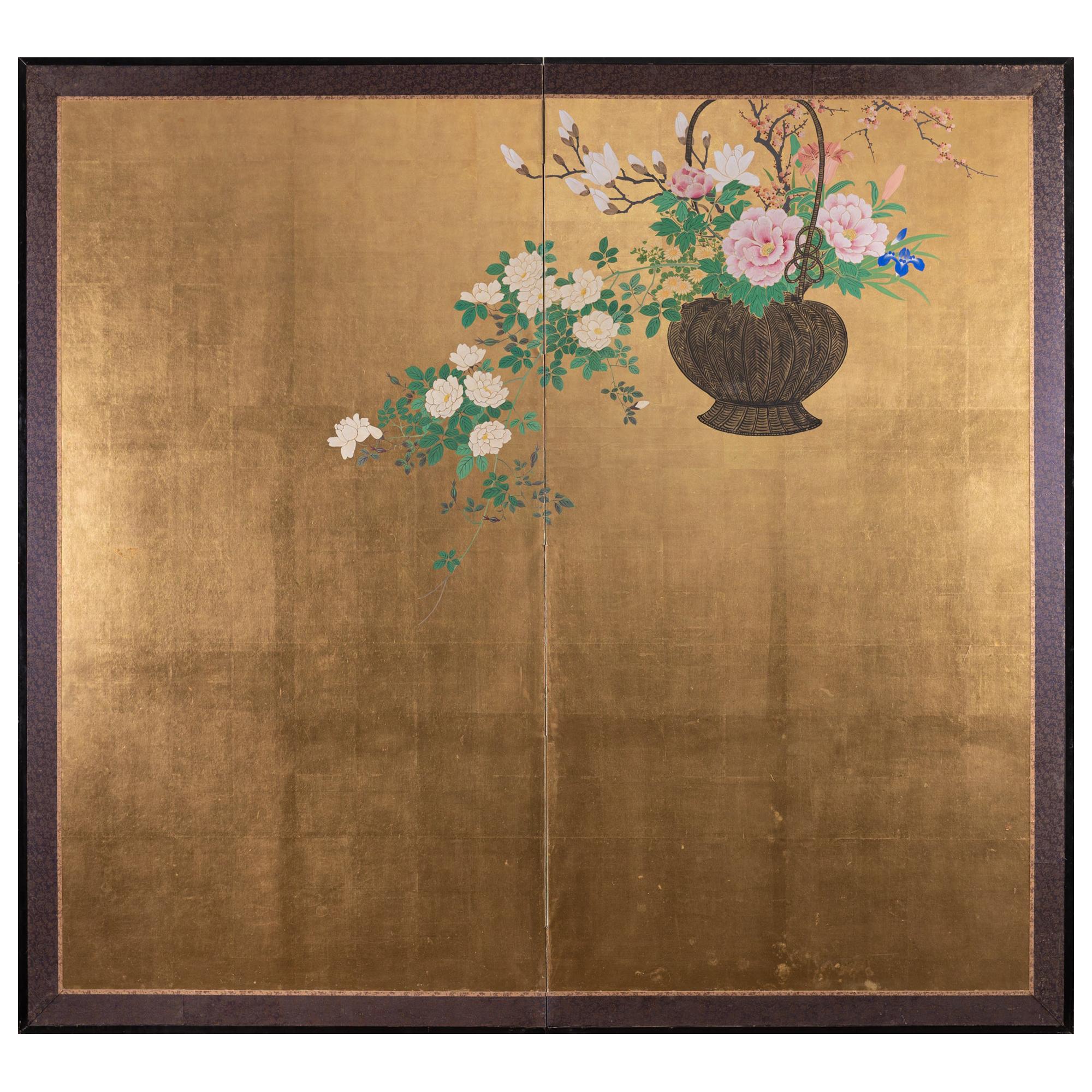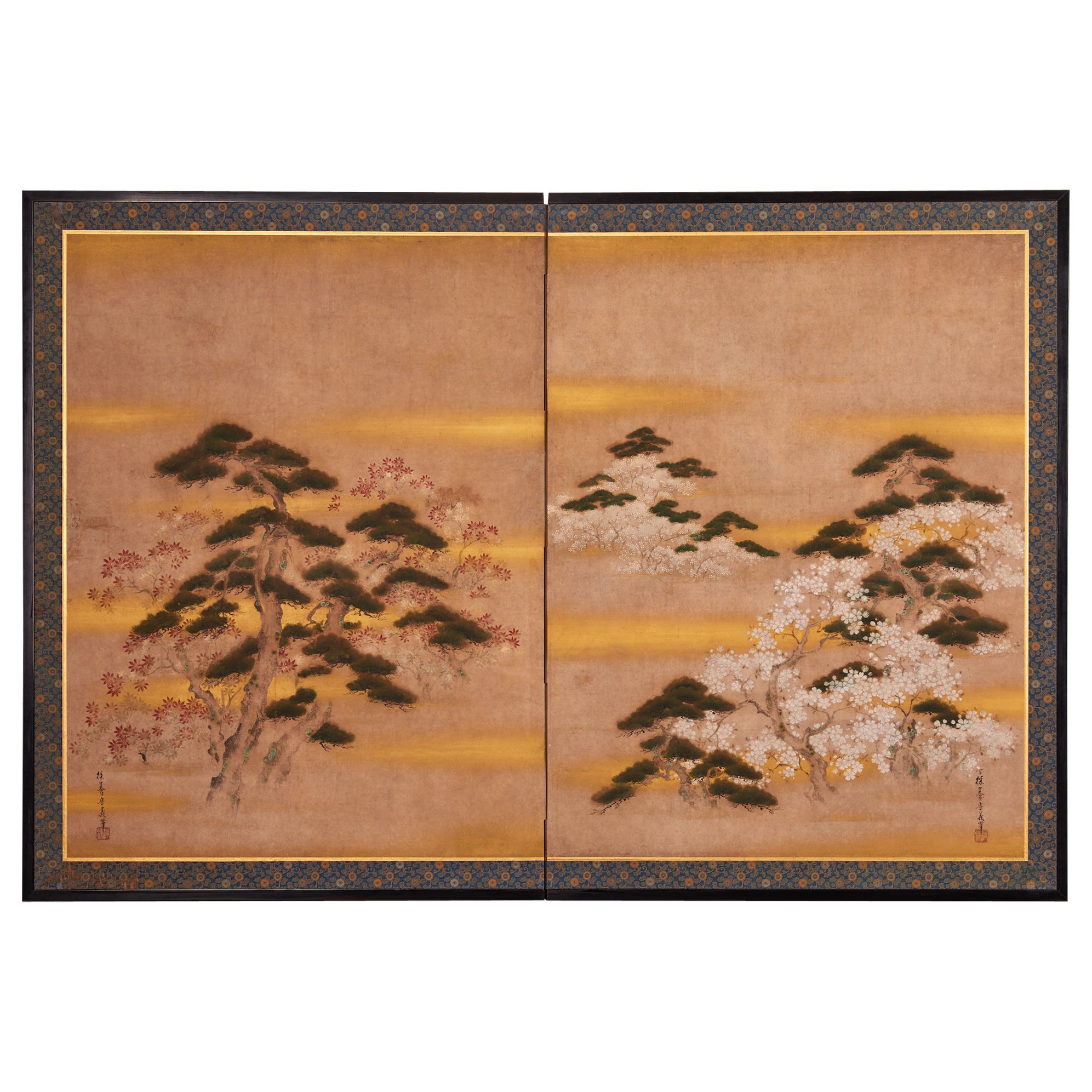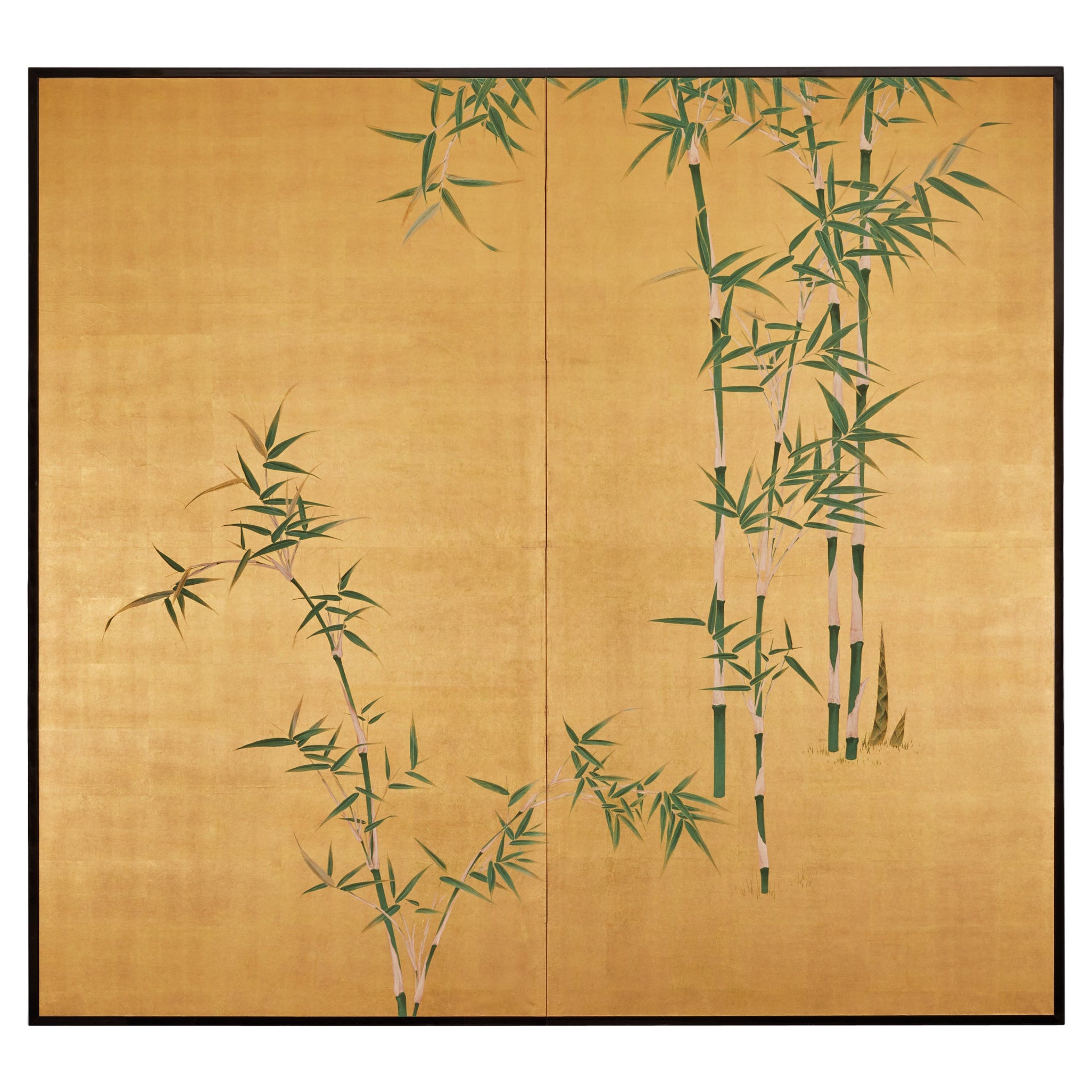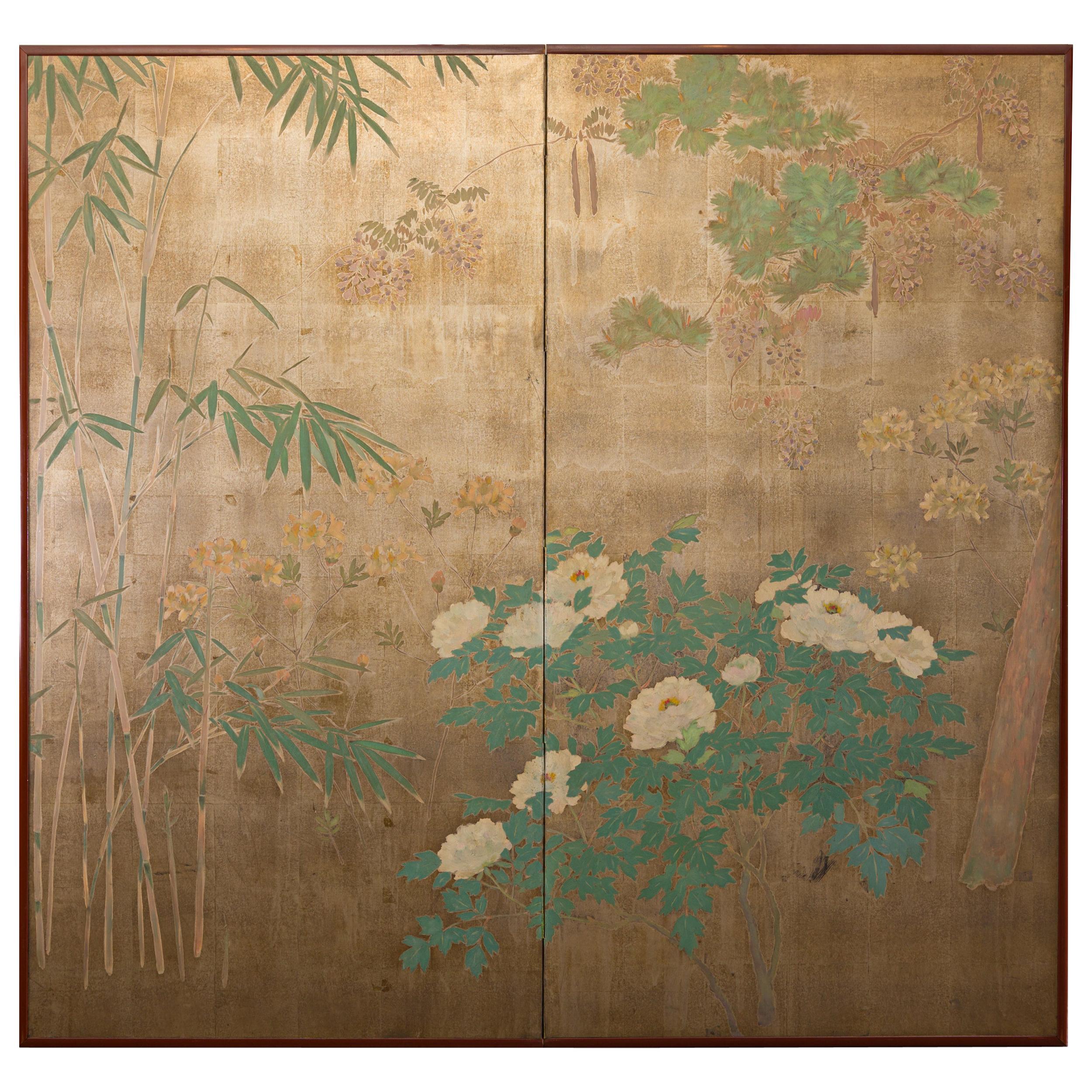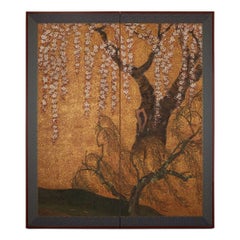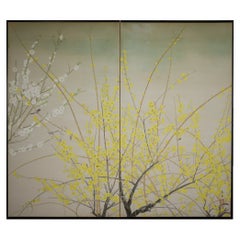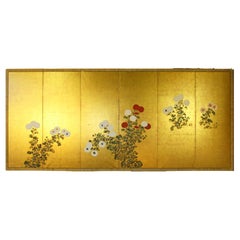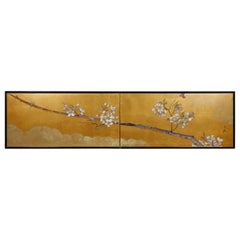
Japanese Two-Panel Screen, Cherry Blossoms on Gold
View Similar Items
Want more images or videos?
Request additional images or videos from the seller
1 of 10
Japanese Two-Panel Screen, Cherry Blossoms on Gold
About the Item
- Dimensions:Height: 18.25 in (46.36 cm)Width: 72 in (182.88 cm)Depth: 0.75 in (1.91 cm)
- Materials and Techniques:
- Place of Origin:
- Period:
- Date of Manufacture:circa 1900
- Condition:Condition report upon request.
- Seller Location:Hudson, NY
- Reference Number:Seller: S18911stDibs: LU855131777992
About the Seller
5.0
Recognized Seller
These prestigious sellers are industry leaders and represent the highest echelon for item quality and design.
Established in 1971
1stDibs seller since 2008
150 sales on 1stDibs
Typical response time: 6 hours
Associations
The Art and Antique Dealers League of AmericaAntiques Associations Members
More From This SellerView All
- Japanese Two Panel Screen, Cherry Blossoms in Willow LandscapeLocated in Hudson, NYDramatic and beautifully executed cherry blossoms trickle down the two panels with natural willows calmly coexisting with luminous gold dust fading to the ground. Mineral pigments an...Category
Antique Mid-19th Century Japanese Paintings and Screens
MaterialsGold
- Japanese Two Panel Screen Cherry and ForsythiaLocated in Hudson, NYMineral pigments on silk. Signature and seal read: Shunsei (or Haruo).Category
Early 20th Century Japanese Paintings and Screens
MaterialsSilk
- Japanese Two-Panel Screen Peony and CherryLocated in Hudson, NYJapanese two-panel screen: Peony and Cherry, Edo period (circa 1800) painting, formerly fusuma (Japanese sliding doors), executed in the Kano school style, featuring a cherry tree in...Category
Antique Early 1800s Japanese Edo Paintings and Screens
MaterialsGold Leaf
- Japanese Two-Panel Screen: Cranes on GoldLocated in Hudson, NYEarly Kano School painting of pine trees overlooking two beautifully painted cranes and floral design in a natural setting by water’s edge. Mineral pig...Category
Antique Late 18th Century Japanese Paintings and Screens
MaterialsGold, Gold Leaf
- Japanese Two Panel Screen: Waves on GoldLocated in Hudson, NYInk on gold leaf with a silk brocade border. Signature reads: Nakajima Raishou (1796-1872). Student of Maruyama Okyo (one of Japan's most famous artists).Category
Antique Mid-19th Century Japanese Paintings and Screens
MaterialsBrocade, Silk, Paper
- Japanese Two-Panel Screen Ikebana on GoldLocated in Hudson, NYJapanese two-panel screen: Ikebana on gold. Meiji period (1868-1912) painting of a basket with beautifully arranged spring flowers in the style of ikebana (Japanese traditional flowe...Category
Antique Late 19th Century Japanese Meiji Paintings and Screens
MaterialsGold Leaf
You May Also Like
- Japanese Showa Two Panel Screen Blossoming Prunus TreeLocated in Rio Vista, CASerene Japanese Showa period two-panel folding byobu screen depicting a large spring blossoming prunus tree or plum tree. Beautifully painted with ink and natural color pigments on m...Category
20th Century Japanese Showa Paintings and Screens
MaterialsBrass
- Japanese Two-Panel Gold Leaf Screen by YoshikawaLocated in Rio Vista, CAStunning Japanese two-panel folding screen featuring a gold leaf landscape signed by Yoshikawa. Delicate scene of cherry and willow trees near a village with high mountains in the ba...Category
20th Century Chinese Meiji Paintings and Screens
MaterialsBrass, Gold Leaf
$6,000 Sale Price20% Off - Six-Panel Japanese Screen on Spring Gold LeafLocated in Brescia, ITSpring landscape by an unknown painter of the Rinpa school, 19th century, six-panel ink painted on gold leaf on rice paper. The flowers are made with the "gofun" technique, natural or pigmented white oyster powder. Rinpa (? ?, Rinpa) is one of the major historical schools of Japanese painting. the style was consolidated by the brothers Ogata Korin (1658–1716) and Ogata Kenzan...Category
Antique Late 19th Century Japanese Edo Paintings and Screens
MaterialsGold Leaf
- Early 20th Century Japanese Cherry Blossom Screen by Kano SanrakukiLocated in Kyoto, JPCherry Blossoms Kano Sanrakuki (1898-1981) Showa period, circa 1930 2-panel Japanese Screen Color, gofun and gold leaf on paper Against a backdrop of gold-leafed ground, the lichen covered trunk and branches of the life-sized cherry blossom tree reach out and beyond the confines of the pictorial surface. The overall composition has a feeling of flatness which draws emphasis to the surface and the three-dimensionality of the cherry blossoms. Painstakingly built-up layers of thickly applied shell-white gofun detail the voluminous blossoms and cover large areas of this tour-de-force of Japanese Nihonga painting. By simplifying the background, minimizing the number of colors and depicting the blossoms with such heavy relief, the artist has emphasized the stunning presence of the cherry tree. The type of tree depicted is the Yae-Zakura; a double-layered type of cherry blossom famed for its beauty and strength. When we think of Japanese cherry blossoms, the first thing that comes to mind is Somei Yoshino variety, which has a single flower with five almost white petals. This type is fragile and easily blown away by strong wind or rain. Most of the double-flowered cherry blossoms begin to bloom when the Somei-Yoshino falls, and the flowering period lasts longer than that of the Somei-Yoshino. Kano Sanrakuki originally studied painting at the Kyoto City Arts and Crafts School under the tutelage of Yamamoto Shunkyo...Category
Early 20th Century Japanese Showa Paintings and Screens
MaterialsGold Leaf
- Japanese Edo Two-Panel Screen Flowers of AutumnLocated in Rio Vista, CAImpressive early 19th century Japanese Edo period two-panel screen featuring flowering plants and grasses of autumn. Painted in the Tosa School style Bunka Bunsei period or Ogosho pe...Category
Antique 19th Century Japanese Edo Paintings and Screens
MaterialsSilk, Wood, Paper
- Japanese Meiji Two Panel Screen Geese and ReedsLocated in Rio Vista, CAFantastic Japanese late Meiji period two-panel byobu screen by Hashimoto Koshu. The large screen features two white geese amid brightly colored reeds. The symbolism of geese and reeds was introduced to Japan from China in the 13th century. This was a popular subject for Japanese zen artists of the period. Beautifully crafted with exceptional brush strokes and details. Made with natural pigments in dramatic vivid colors of white, pink, and mint green on a silk background of gilt. Circa 1900 with artist seal on bottom right corner. Koshu studied Western art under...Category
20th Century Japanese Meiji Paintings and Screens
MaterialsSilk, Wood, Paper
Recently Viewed
View AllMore Ways To Browse
Japanese Gold
Japan Gold
Japan Soft
Lacquered Screens
Natural Wood Japanese
Cherry And Gold
Japanese Screen Black
Black Lacquered Screen
Asian Black Screens
Antique Backdrop
Gold Japanese Screen Panel
Japanese Screen Gold On Gold
Japanese Lacquer Panels
Japanese Wood Panel Screen
Asian Lacquered Screen Panels
Japanese Painting Gold Black
Asian Two Panel Screen
Two Panel Screen Japan
